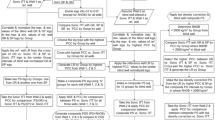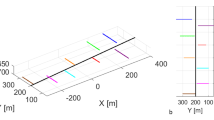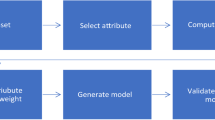Abstract
The conventional synthetic seismogram is created with a sonic and a density log; however, the sonic log can be replaced with the resistivity, neutron, gamma-ray or spontaneous potential log to produce a pseudo-sonic (PS) log. More recent techniques involve combining an SP log and a GR log to produce a PS log. In the past, a drawback in using GR logs for the PS is the presence of highly radioactive and often organic-rich layers possessing abnormally high GR readings. To improve the pseudo-sonic log produced from the gamma-ray log, a technique was developed to statistically treat the outliers from the wells in the Hugoton Embayment that encountered predominantly shale, sandstone, limestone, and dolomite and whose logged sections included both normal and abnormally high GR readings. To demonstrate a wider-range application of our method, the procedure was applied to wells from the Hugoton Embayment, Central Kansas Uplift, Sedgwick Basin, Salina Basin, Forest City Basin and Nemaha Uplift. The correlation coefficients between the PS and the conventional sonic for the six basins were 0.75, 0.92, 0.86, 0.91, 0.77, and 0.70, respectively. Also, the match between the resulting conventional synthetic seismogram and the pseudo-synthetic seismogram from a blind test well for each area was quite good. Provided the outliers have been properly treated, the GR log is a viable tool for creating pseudo-sonic logs and pseudo-synthetic seismograms for exploration in oil and gas basins where there are few wells with sonic logs or where sonic log quality is poor.














Similar content being viewed by others
References
Adeoti, N. L., Onyekachi, N., Olatinsu, O., Fatoba, J., & Bello, M. (2013). Static reservoir modeling using well log and 3-D seismic data in a KN field, offshore Niger Delta, Nigeria. International Journal of Geosciences, 5(1), 93–106.
Akinyokun, O. C., Enikanselu, P. A., Adeyemo, A. B., & Adesida, A. (2009). Well log interpretation model for the determination of lithology and fluid contents. The Pacific Journal of Science and Technology, 10(1), 507–517.
Asquith, G., & Gibson, C. (1982). Basic well log analysis for geologists Methods in exploration series (Vol. 3, p. 216). Tulsa: The American Association of Petroleum Geologists.
Bluman, A. G. (2001). Elementary statistics (p. 757). New York: McGraw-Hill.
Burch, D. (2002). Sonic logs need trouble shooting (p. 4). Tulsa: American Association of Petroleum Geologists, Geophysical Corner.
Cline, W. M. (1989). Measured logs vs. calculated logs for seismic interpretation. Oil and Gas Journal, 87(44), 52–56.
Cluff, S. G., & Cluff, R. M. (2004). Petrophysics of the Lance Sandstone reservoirs in Jonah Field, Sublette County, Wyoming. In J. W. Robinson & K. W. Shanley (Eds.), Case study of a giant tight-gas fluvial reservoir (pp. 215–241). Denver: American Association of Petroleum Geologists, Studies in Geology 52 and Rocky Mountain, Association of Geologists Guidebook.
Crain, E. R. (2000). Crain’s petrophysical handbook. E R (Ross) Crain. P. Eng. https://www.spec2000.net/00-resume.htm.
Davis, J., Johnson, R., Boniol, D., & Rupert, F. (2001). Guidebook to the correlation of geological well logs within the St. Johns River water management district (p. 114). Special Publication No. 50, published in cooperation with the St. Johns River Water Management District, Palatka, Florida, USA. Florida: Florida Geological Survey.
Dennison, A. T. (1960). An introduction to synthetic seismogram techniques. Geophysical Prospecting, 8(2), 231–241.
Dræge, A., Jakobsen, M., & Johansen, T. A. (2006). Rock physics modeling of shale digenesis. Petroleum Geoscience, 12(1), 49–57.
Durschner, H. (1958). Synthetic seismograms from continuous velocity logs. Geophysical Prospecting, 6(3), 272–284.
Fassett, J. E., & Hinds, J. S. (1971). Geology and fuel resources of the Fruitland formation and Kirtland shale of the San Juan Basin (p. 676). New Mexico and Colorado: USGS Professional Paper, United States Government Printing Office.
Faust, L. Y. (1951). Seismic velocity as a function of depth and geologic time. Geophysics, 16(2), 192–206.
Faust, L. Y. (1953). A velocity function including lithological variation. Geophysics, 18(2), 271–288.
Hearst, J. R., Nelson, P. H., & Paillet, F. L. (2000). Well logging for physical properties. A handbook for geophysicists, geologists, and engineers (2nd ed., p. 492). West Sussex: Wiley.
Hinkle, D. E., Wiersma, W., & Jurs, S. G. (2003). Applied statistics for the behavioral sciences (p. 756). Boston: Houghton Mifflin.
Holmes, M., Holmes, D., & Holmes, A. (2003). Generating extra logs-techniques and pitfalls (p. 5). Salt Lake City, Utah: American Association of Petroleum Geologist Annual Convention. (extended abstract).
Japsen, P., Mukerji, T., & Mavko, G. (2007). Constraints on velocity-depth trends from rock physics Models. Geophysical Prospecting, 55(2), 135–154.
Katahara, K. (1995). Gamma ray log response in shaly sands. Society of Petrophysicists and Well-Log Analysts, 36(4), 50–72.
Kenter, J. A. M., & Stafleu, J. (1994). Synthetic seismograms at Site 866; origin of reflections and implications for recognizing the limestone/basalt transition in Cretaceous Mid-Pacific guyots. In Winterer E. L., Sager W. W., Firth J. V., & Sinton, J. M. (Eds.) 1995 Proceedings of the Ocean Drilling Program, Scientific Results (Vol. 143, pp. 305–315).
Koch, G. G. (1985). A basic demonstration of the [− 1, 1] range for the correlation coefficient. The American Statistician, 39(3), 201–202.
Krassay, A. A. (1998). Outcrop and drill core gamma-ray logging integrated with sequence stratigraphy: examples from Proterozoic sedimentary successions of northern Australia. Journal of Australian Geology & Geophysics, 17(4), 285–299.
Kung, S. L., Lewis, C., & Wu, J. C. (2013). A technique for improving pseudo-synthetic seismograms generated from neutron logs in gas-saturated clastic rocks. Journal of Geophysics and Engineering, 10(3), 035015.
Kung, S. L., Lewis, C., & Wu, J. C. (2014). A resistivity log-derived and gas-corrected pseudo-synthetic seismogram. Application to the Fanpokeng Gas Field of northwestern Taiwan. New Zealand Journal of Geology and Geophysics, 57(1), 21–31.
Lawrence, T.D., Kohar, A., Sukamto, B., & Pramono, H. (1997). Sonic/density well log data editing with pseudo curve generation: Indonesian examples using a multiple cross product nonlinear method. In 15th World Petroleum Congress, Beijing, China (pp. 163–167).
Lindseth, R. O. (1979). Synthetic sonic logs-a process for stratigraphic interpretation. Geophysics, 44(1), 3–26.
Lubanzadio, M., Goulty, N. R., & Swarbrick, R. E. (2006). The dependence of sonic velocity on effective stress in North Sea Mesozoic mudstones. Marine and Petroleum Geology, 23(6), 647–653.
Luning, S., & Kolonic, S. (2003). Uranium spectral gamma-ray response as a proxy for organic richness in black shales: applicability and limitations. Journal of Petroleum Geology, 26(2), 153–174.
Meyer, B. L., & Nederlof, M. H. (1984). Identification of source rocks on wireline logs by density/resistivity and sonic transit time/resistivity crossplots. American Association of Petroleum Geologists Bulletin, Hague, Netherlands, 68(2), 121–129.
Nilsen, T. H., Shew, R. D., Steffens, G. S., & Studlick, J. (2008). Atlas of deep-water outcrops (p. 504). Houston, Texas: American Association of Petroleum Geologists and Shell Exploration & Production Press.
Ojala, I.O. (2009). Using rock physics for constructing synthetic sonic logs. In Proceedings of the 3rd CANUS Rock Mechanics Symposium, Toronto, Canada (p. 10).
Pearson, K. (1895). Notes on regression and inheritance in the case of two parents. Proceedings of the Royal Society of London, 58, 240–242.
Peterson, R. A., Fillipone, W. R., & Coker, F. B. (1955). The synthesis of seismograms from well log data. Geophysics, 20(3), 516–538.
Planke, S. (1993). Rifting and continental breakup. seismic response and crustal evolution with emphasis on the Vøring volcanic margin. PhD Thesis, University of Oslo, Cited by. Planke, S. 1994, Geophysical response of flood basalts from analysis of wireline logs. Ocean Drilling Program Site 642, Vøring volcanic margin. Journal of Geophysical Research, 99(B5), 9279–9296.
Poupon, A., & Gaymard, R. (1970). The evaluation of clay content from logs. In Society of Petrophysicists and Well-Log Analysts 11th Annual Logging Symposium, 3–6 May, Los Angeles, California (p. 21).
Quadir, A., Lewis, C., & Rau, R.-J. (2018). The spontaneous ray log: a new aid for constructing pseudo-synthetic seismograms. Pure and Applied Geophysics. https://doi.org/10.1007/s00024-018-1797-x.
Quartero, E. (2014). Gamma ray normalization and regional fluvial architecture: the Paleocene Paskapoo Formation, Alberta. Master’s Thesis, University of Calgary. https://prism.ucalgary.ca/bitstream/handle/11023/1435/ucalgary_2014_erik_quartero.pdf;jsessionid=420A4011C5464A5137E109098F9B8966?sequence=2.
Rolon, L., Mohaghegh, S. D., Ameri, S., Gaskari, R., & McDaniel, B. (2009). Using artificial neural networks to generate synthetic well logs. Journal of Natural Gas Science and Engineering, 1(4–5), 118–133.
Rousseeuw, P. J., Ruts, I., & Tukey, J. W. (1999). The bagplot: A bivariate boxplot. The American Statistician, 54(4), 382–387.
Rudman, A. J., Whaley, J. F., Blakely, R. F., & Biggs, M. E. (1975). Transformation of resistivity to pseudo-velocity logs. American Association of Petroleum Geologists, 59(7), 1151–1165.
Schmoker, J. W. (1981). Determination of organic-matter content of Appalachian Devonian shales from gamma-ray logs, Denver, Colorado. American Association of Petroleum Geologists Bulletin, 65(7), 1285–1298.
Smith, J. H. (2007). A method for calculating pseudo-sonic from e-logs in a clastic geologic setting. Gulf Coast Association of Geological Societies Transactions, 57, 675–678.
Spike, K.T. & Dvorkin, J.P. (2004). Reservoir and elastic property prediction away from well control. In Offshore Technology Conference, Houston, Texas (p. 7).
Taylor, R. (1990). Interpretation of the correlation coefficient. A basic review. Journal of Diagnostic Medical Sonography, 6(1), 35–39.
Tiwary, D.N., Singh, B., Arasu, R.T., Rhaman, M., Saha, P., & Chandra, M. (2004). Travel time modelling using gamma-ray and resistivity log in sand shale sequence of Gandhar field. In 5th Conference and Exposition on Petroleum Geophysics, Hyderabad, India (pp. 146–151).
Tukey, J. W. (1977). Exploratory data analysis (p. 689). United Kingdom: Addison-Wesley.
Whittaker, S.D., Sharma, R., Hallau, D., Lewis, J.P., & Cluff, R.M. (2010). Characterization of a slim-hole gamma-ray sonde for potash exploration applications in a simple test pit environment. In 23rd EEGS Symposium of the Application of Geophysics to Engineering and Environmental Problems, Borehole Geophysics, Expanded Abstract, Denver (p. 26).
Wittick, T. (1992). Synthetic seismograms the bridge between seismic and log data (p. 47). Texas: The American Association of Petroleum Geologists, Abilene Geological Society.
Wood, G. H., Jr., Kehn, T. M., Carter, M. D., & Culbertson, W. C. (2003). Coal resource classification system of the U.S. geological survey (p. 65). Denver: Geological Survey Circular 891.
Acknowledgements
The authors express their gratitude to Pierre Keating for his professional editorial help and two anonymous reviewers for their suggestions that helped to improve the manuscript. We are deeply indebted to Kansas Geological Survey for free use of well data from their internet site, and we are also thankful to Mr. Carl Schaftenaar for use of purchased Geotools software (QuickSyn).
Author information
Authors and Affiliations
Corresponding author
Appendix
Appendix
This section includes cross-plots for the gamma ray versus sonic ITT, as well as cross-plots for resistivity versus Sonic ITT for a total of 72 wells from six basins/uplifts in Kansas (Figs. 15, 16, 17, 18, 19) demonstrate that the empirical correlation between the gamma-ray versus sonic ITT is overall as good (or better) in Kansas than that of the much more commonly used resistivity versus sonic ITT (Tables 4, 5).
a Cross-plot of natural gamma ray versus sonic (ITT), b resistivity (IDL) versus sonic (ITT) and c resistivity (RLL3) versus sonic (ITT) for 13 wells from the Sedgwick-Salina Basins (Log data courtesy of Kansas Geological Survey). Note. Out of the 13 wells, only 3 wells were from the Salina Basin. The two basins were combined for a broader statistical basis and in following other studies who consider the two basins to be linked in terms of hydrocarbon plays
In the plots that follow, a gamma ray maximum cut off value of 160 API according to the box-and-whiskers plot (Fig. 3 in text) was used for all structural elements and all wells. We combined the Sedgwick and Salina basin into one structural element and counted it as Sedgwick-Salina Basin (Table 4) because there were fewer wells available in the Salina Basin. The minimum depth of each log was approximately 300 m. We cross-plotted the gamma ray against the sonic (ITT) (Figs. 15a, 16a, 17a, 18a, 19a), deep induction resistivity (ILD) versus sonic (ITT) (Figs. 15b, 16b, 17b, 18b, 19b) and the shallower induction resistivity (RLL3) against sonic (ITT) (Figs. 17c, 18c). The gamma ray versus sonic (ITT) in all structural elements were plotted on a linear scale. By contrast, the deep induction resistivity (ILD) versus sonic (ITT) and the shallower induction resistivity (RLL3) versus sonic (ITT) were plotted on a semi-logarithmic scale. Then, we calculated the \(R^{2}\) values for all cross-plots. A comparison of the results is given in Table 5.
Rights and permissions
About this article
Cite this article
Quadir, A., Lewis, C. & Rau, RJ. Generation of Pseudo-synthetic Seismograms from Gamma-Ray Well Logs of Highly Radioactive Formations. Pure Appl. Geophys. 176, 1579–1599 (2019). https://doi.org/10.1007/s00024-018-1979-6
Received:
Revised:
Accepted:
Published:
Issue Date:
DOI: https://doi.org/10.1007/s00024-018-1979-6









